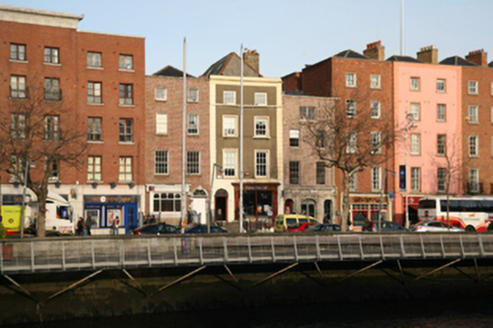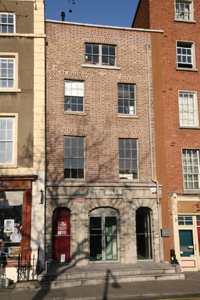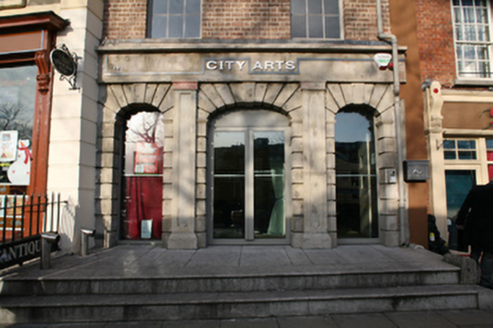Survey Data
Reg No
50010330
Rating
Regional
Categories of Special Interest
Architectural, Artistic
Previous Name
City Arts
Original Use
House
In Use As
Studio
Date
1670 - 1740
Coordinates
315809, 234366
Date Recorded
05/12/2011
Date Updated
--/--/--
Description
Terraced two-bay four-storey house over concealed basement, built c.1705. Remodelled in 2010. Now in use as architecture centre with Victorian stucco shopfront to ground floor. Hipped slate roof, gabled to rear and set behind parapet wall with replacement granite coping and replacement cast-iron hopper and down pipe breaking through to east end. Chimneystack embedded into adjoining development to east. Yellow brick walls laid in Flemish bond with recent tuck lime pointing. Pinched fenestration pattern with gauged brick window openings having lead-lined granite sills, replacement granite to top floor and replacement timber sliding sash windows (bipartite to single third floor opening). Continuous lead-lined sill course to first floor forming cornice to tripartite rusticated arcaded ground floor shopfront. Three-centred-arch openings with rusticated and voussoired surrounds having replacement steel glazed doors. Central opening flanked by flat panelled Doric pilasters to rendered fascia. Doors open onto replacement granite paved platform and full-span granite steps.
Appraisal
Bachelor's Walk was laid out c.1680 as an extension of Ormond Quay, with the building of residences starting in the early 1700s by wealthy merchants. This house is one of the few to survive the demolitions of the 1980s. Extensively remodeled by McCullough Mulvin Architects, the building retains its pinched fenestration suggesting a former gable-front. The house also retains a Victorian shopfront, an early roof profile and its overall external composition. The interior retains some early timber joinery including a rare closed-string dog-leg timber stair and corner chimneybreasts. Along with Nos.7, 8, 13 and 14, the retention of this house formed part of the recent reconstruction of Bachelor's Walk, which despite being a loose interpretation of the original, has managed to reinstate the rhythmic and vertical character of the quayside following half a century of dereliction.





